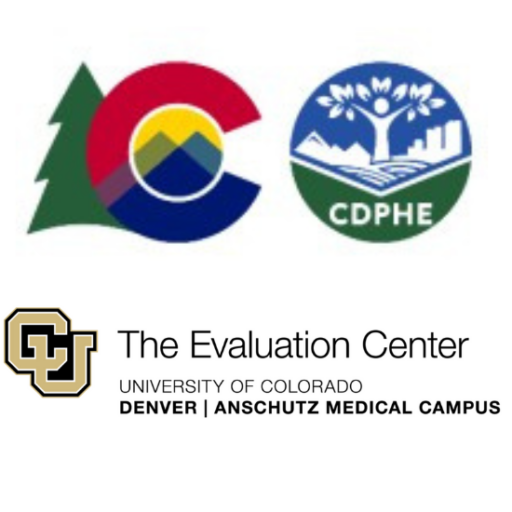Taking Action
In this step you will:
Run a pilot and refine the intervention.
Implement the intervention.
Evaluate the intervention.
Look for ways to have further impact based on feedback from community members experiencing the intervention.
Taking Action
Click the arrow ( ![]() ) symbol next to each section to expand and learn more.
) symbol next to each section to expand and learn more.
Run a pilot and refine the intervention.
With an intervention chosen, the project team can begin to make plans to implement it. Before investing resources into larger scale adoption and implementation, run a pilot.
Running a pilot means testing out a strategy on a smaller scale in a limited timeframe to identify any process, content, or technical issues that require adjustments. Challenges and barriers are expected to surface during a pilot. A pilot is also an opportunity to learn how feasible a particular strategy is to implement in a specific community, and it can be a way to get additional feedback and buy-in from users.
Keep track of challenges, discuss them as a team, and use the pilot as an opportunity to trial solutions. If it emerges that an intervention is a poor fit, accept those data and pivot. Adjusting the intervention at this stage can prevent future frustrations and misuse of resources.

In the Cannabis Project, we piloted the online prevention training suite with community members. We recruited 20 individuals who worked with youth in the community and had not been a part of the needs assessment. This group was asked to complete a baseline knowledge survey to measure their initial knowledge of cannabis prevention; watch all four online trainings and complete each associated feedback survey; and complete the knowledge survey again after completion of the trainings. Participants received a $100 e-gift card for their time.
The data collected from the baseline and post-training surveys, as well as the reaction surveys, were summarized and shared with the project team. The baseline and post-training surveys demonstrated the effectiveness of the trainings in increasing knowledge among participants and captured ideas of who may most benefit from the trainings. The reactions surveys confirmed the relevancy of the training content and the accessibility of the training format. They also provided a space for participants to make suggestions for the trainings.
These findings were presented back to community members at an in-person meeting, and a guided discussion about dissemination helped the project team develop community-informed next steps.
- A baseline survey measured participants’ initial knowledge on related topics.
- A post-training survey measured participants’ knowledge after completing the trainings.
Each training had a reaction survey, like this one, that appeared on the screen for participants to complete at the end of the training.
Implement the intervention.
Once you have piloted the intervention and adapted it based on community feedback and implementation challenges faced, it’s time to develop a plan for full implementation.
Include answers to the following questions in your implementation plan:
- What is the timeline for implementing the strategy?
- What are the roles and responsibilities necessary for implementing the strategy?
- Who will fulfill these roles?
- How will you spread the word about this opportunity to the intended audience?
- How can you engage community champions in spreading the word?
With an implementation plan prepared, you are ready to carry out the plan. Stay in regular communication with everyone involved and track progress to ensure the intervention is being carried out.

In the Cannabis Project, we collaborated with community champions to identify ways to disseminate the trainings. We held an in-person meeting with community champions, presented the results from the pilot surveys, and facilitated a discussion about the benefits of the trainings and next steps.
We asked community champions to reflect on and share responses to the following questions:
- What would it look like in the community if these trainings were well distributed and adopted?
- Who in the community should engage with these trainings?
- Who can/will reach out to share and encourage these individuals?
Community champions identified potential users for the trainings such as schools (administrators, health teachers, 6-8th grade teachers, counselors), youth mentors, parents, case managers/therapists, health providers, law enforcement, and church-based groups.
After the meeting, we created and shared an action plan document that included the identified individuals in the local community within those user groups. Community champions were encouraged to review the list of individuals and the commitments they had made to contact those individuals. Our team strived to remain in contact with community champions to support carrying out this dissemination plan for the online trainings.
Evaluate the intervention.
Evaluation helps program leaders to understand the efficacy and effectiveness of the intervention and to recognize changes needed to ensure programmatic goals are met. Identify a few questions to guide the development of an evaluation plan. The evaluation methods will look different depending on what you would like to learn about the program.
Keep program funding, staff capacity, and program design in mind as you design the evaluation. Look for places in the program design to seamlessly add in evaluation components. For example, when you email a thank you note to attendees of a program, you could include a link to a learning or satisfaction survey. Strive to keep a consistent schedule of evaluation activities, whether that’s monthly, quarterly, or yearly. A consistent schedule serves as a reminder to do evaluation and helps to ensure you have enough data to make comparisons.
Once the evaluation plan is chosen and evaluation activities have been completed, remember to share the results and hold internal meetings. The value of evaluation is in what leaders do with the results. Make sure to take time to consider the findings, discuss what the results mean, and what, if any, changes may help the program to be more effective.

This overview webpage from the Centers for Disease Control and Prevention outlines the goals of program evaluation, the different types of program evaluation, and their uses.
“Using Evaluation to Build Evidence,” created by the HB21-1276 Colorado Prevention Collaborative and The Evaluation Center, is a toolkit to guide innovative or adapted community programs in beginning program evaluation.
SAMHSA’s Strategic Prevention Framework has two appendices dedicated to making the most of evaluation dollars and evaluation design guidance. These resources can help initial planning stages of the evaluation.

In the Cannabis Project, the Kirkpatrick Evaluation Model was used to inform analysis of reaction survey and training registration data. Our evaluation questions guided development of a registration survey that those accessing the trainings completed when creating their user account, a reaction survey that participants were prompted to complete after each training, and a yearly participant survey.
These were our evaluation questions:
Reach:
- Who is accessing the trainings?
- What trainings have been accessed and which online trainings have been revisited?
Reaction:
- How have individuals reacted to the online trainings?
Learning:
- To what extent have knowledge, attitudes, or behavior changes occurred that can be attributed to the trainings?
Behavior:
- To what extent have participants implemented what they have learned?
Expand your impact.
Look for ways to have further impact based on feedback from community members experiencing the intervention. The needs assessment, community feedback meetings, and evaluation may surface community needs and interests beyond what the intervention can cover or accomplish. If there is funding capacity, staff capacity, and sufficient community interest, additional needs and interests may be addressed through supplemental programming.

In the Cannabis Project, we offered systems change coaching as an additional support for community champions working to prevent youth cannabis use. This coaching was focused on preparing participants to implement policy or environmental changes that prevent or delay the initiation of cannabis use by youth.
Through the coaching program we heard a community need for connecting with peers in the field, sharing resources, and furthering learning. The project team partnered with a contractor to offer a free, virtual Community of Practice (CoP) for an hour a month for six months. Community champions and local professionals informed the topics covered. The purpose was to better understand resources, skills, and knowledge that professionals working in youth-serving organizations may need to delay the onset of cannabis use, engage authentically with youth, and support youth to thrive in their communities.

We heard from CoP participants that resources and learnings impacted their work and lives.
“So much information is relatable or in some aspect comparable to some of my counties.”
“The podcast [assigned by facilitators as pre-work] was a great reminder that teens do make healthy choices and take smart risks.”
